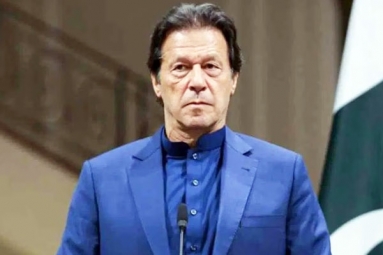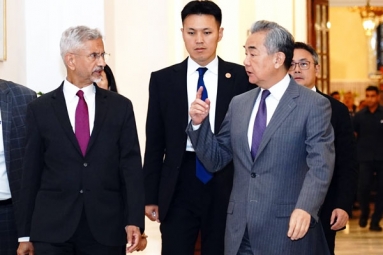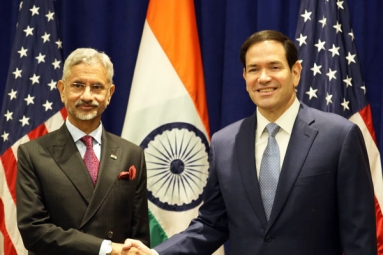
(Image source from: x.com/DrSJaishankar)
India's External Affairs Minister, S Jaishankar, openly revealed the primary reason the India-Pakistan ceasefire occurred on May 10, stating, "Fighting ceased on the 10th solely because that morning, we struck and incapacitated eight key Pakistani airfields." Speaking plainly in an interview with the American news website POLITICO, Jaishankar highlighted India's increasing concern regarding Pakistan's support for terrorist groups and confirmed New Delhi's resolve to take direct military action, if required, to eliminate the threat.
Jaishankar issued a firm warning to Pakistan, stating, "We are indifferent to their location… Should they reside deep within Pakistan, we will penetrate deep into Pakistan," conveying a strong message regarding India's dedication to eradicating terrorism at its source. "The core issue is that it [Pakistan] extensively employs terrorism as a tool of state policy," he conveyed to POLITICO during his visit to Brussels. In response to the question of whether the conditions that previously brought the two nations to the brink of conflict still existed, the minister stated, "If the commitment to terrorism is considered a source of tension, then undoubtedly, it persists."
India, in response to the April 22 Pahalgam attack—which resulted in the brutal deaths of 26 civilians—launched operation Sindoor on May 7, striking nine terror launchpads within Pakistan and Pakistan-Occupied Kashmir, neutralizing hundreds of terrorists. Under pressure, Pakistan repeatedly attempted to deploy drones and missiles against India, but India's robust air defense systems successfully countered all threats. India and Pakistan reached a ceasefire agreement on May 10. Jaishankar addressed the ceasefire, in addition to reports of Indian jets sustaining damage in the military operation by conveying to POLITICO: “To me, the effectiveness of the Rafale, or other systems, is evident in the destruction and disablement of airfields on the Pakistani side.”
He further explained: “The fighting stopped on the 10th for one reason and one reason only, which was that on the 10th morning we hit these eight Pakistani, the main eight Pakistani airfields and disabled them. And don’t take my word for it, these are images which are available in Google. You can look at those runways and those hangars which have taken the hit." According to a confidential Pakistani report on its internal military operation ‘Bunyan un Marsoos’ against India, the Indian strikes inflicted damage on at least eight more of its locations—a greater number than it had previously admitted.
Included in the report is a map indicating that Indian air strikes in Pakistan inflicted damage on various sites including Peshawar, Jhang, Hyderabad in Sindh, Gujrat in Punjab, Gujranwala, Bhawalnagar, Attock, and Chor during the night of May 9 and 10. Notably, these locations were not highlighted in the briefings conducted by the Indian Armed Forces. The Indian Air Force also neutralized up to six fighter jets from the Pakistan Air Force, along with two high-value aircraft, over ten Unmanned Combat Aerial Vehicles, one C-130 transport plane, and several cruise missiles.
According to high-ranking government officials speaking to News18, India's assault on May 10 against 11 Pakistani airbases resulted in the destruction of 20 percent of the country's air force capabilities. The offensive focused on significant ammunition storage facilities and airbases, including Sargodha and Bholari, which housed F-16 and JF-17 jets. Consequently, approximately 20 percent of Pakistan's air force infrastructure was severely damaged. Within a span of just three hours on May 10, India struck 11 military sites, such as Noor Khan, Rafiqui, Murid, Sukkur, Sialkot, Pasrur, Chunian, Sargodha, Skardu, Bholari, and Jacobabad. Satellite imagery taken both prior to and following the assault on Shahbaz airbase in Jacobabad and Bholari airbase vividly illustrates the extent of the devastation.



















